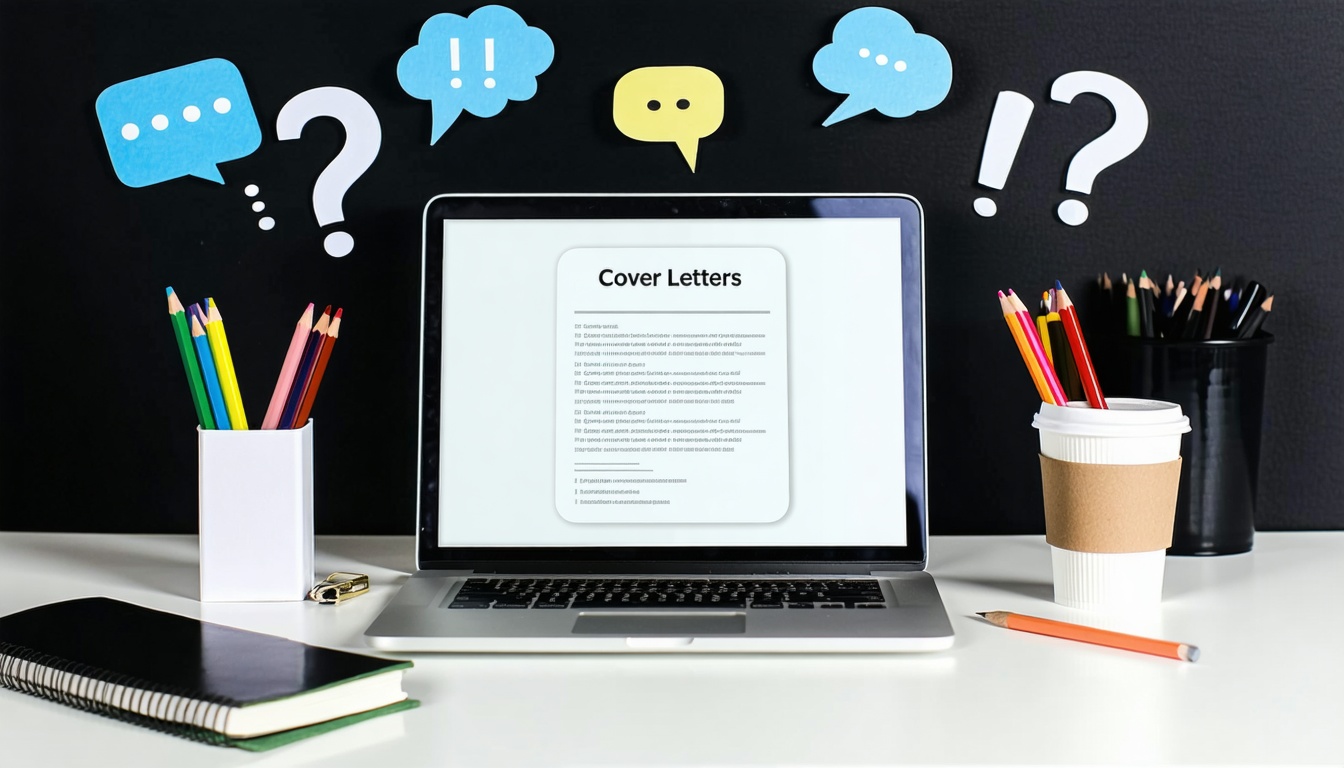
Understanding Optional Cover Letters
Importance of Cover Letters
Cover letters play a significant role in job applications. They offer an opportunity for applicants to present themselves beyond their resume. A well-crafted cover letter allows the applicant to connect their qualifications to the job requirements, exhibit their enthusiasm for the position, and convey their understanding of the company and its values. RoboApply recommends submitting a cover letter even if it is optional, as it can enhance the overall application.
Pros and Cons
Considering whether to write a cover letter when it’s optional involves weighing various factors. Here are some pros and cons to help you decide:
Pros:
- Enhanced Application: Submitting an optional cover letter can improve your chances of standing out. The Balance suggests that a cover letter allows applicants to highlight how their skills and experiences align with the job.
- Demonstrates Interest: Including a cover letter can demonstrate genuine interest in the role and the company, indicating that the applicant has taken extra time and effort.
- Personalization: Cover letters offer a chance to personalize the application, making it easier for recruiters to see why the applicant is a good fit for the position.
- Showcases Communication Skills: Crafting a well-written cover letter showcases the applicant’s written communication skills, attention to detail, and professionalism.
| Benefits of Submitting a Cover Letter | Explanation |
|---|---|
| Enhanced Application | Positions applicant as a standout candidate |
| Demonstrates Interest | Shows genuine effort and enthusiasm |
| Personalization | Connects skills directly to the job |
| Showcases Communication | Highlights writing proficiency and detail-orientation |
Cons:
- Time-Consuming: Writing a tailored cover letter for each job application can be time-consuming, especially if applying to multiple positions.
- Irrelevance: In some cases, the cover letter may not be read. do employers still look at cover letters?
- Potential Redundancy: If not crafted effectively, a cover letter can repeat information already available in the resume.
| Drawbacks of Submitting a Cover Letter | Explanation |
|---|---|
| Time-Consuming | Requires effort for each application |
| Irrelevance | Risk of not being read by employers |
| Potential Redundancy | May repeat resume content |
While there are both pros and cons to submitting an optional cover letter, the general consensus, supported by RoboApply and The Balance, suggests that submitting a cover letter can provide a competitive edge. Consider the specific job and employer expectations before making a decision (what if i don’t submit a cover letter?).
Employer Perspectives on Cover Letters
Understanding how employers view cover letters can offer valuable insights for job seekers pondering the question, “should I do a cover letter if it’s optional?” Employers’ expectations and the impact of cover letters on hiring decisions play a significant role in shaping this choice.
Employer Expectations
Many employers still hold traditional views regarding cover letters. They see a personalized cover letter as a crucial element that allows candidates to stand out. Cover letters offer a platform to explain why the candidate is interested in the role and how their skills align with the company’s needs (Source).
According to The Balance, some employers expect to receive cover letters even if they do not explicitly mention it in the job advertisement. Failure to include a cover letter could be interpreted as a lack of motivation or attention to detail. In some instances, applications without a cover letter may be overlooked entirely.
However, this expectation is not universal. In particular cases where the job application instructions explicitly state not to include a cover letter, it is advisable to follow these guidelines to avoid any negative repercussions. Additionally, if the application process does not provide an option to upload a cover letter, not including one should not be a cause for concern (The Balance).
Impact on Hiring Decisions
The impact of cover letters on hiring decisions varies significantly among employers. For some employers, a well-crafted cover letter can be the deciding factor in whether an applicant progresses to the next stage of the hiring process. This personalized document can highlight the candidate’s enthusiasm for the role and provide a narrative that a resume alone cannot convey.
Employers often use cover letters to gauge:
- Interest and Motivation: A compelling cover letter reflects a candidate’s genuine interest in the role and the organization.
- Communication Skills: The ability to articulate thoughts and present them cohesively in a cover letter demonstrates strong communication skills.
- Cultural Fit: Tailored content that aligns with the company’s values can indicate a good cultural fit.
Research has shown that cover letters are deemed necessary for some employers and less critical for others (The Balance). It is generally advisable to include one unless the application instructions suggest otherwise.
| Factor | Impact on Hiring |
|---|---|
| Interest and Motivation | High |
| Communication Skills | Moderate to High |
| Cultural Fit | Moderate |
To maximize the effectiveness of a cover letter, job seekers should take the time to customize it for each application. By researching the employer and carefully tailoring the letter to the job’s specific requirements, candidates can significantly enhance their chances of making a positive impression (Columbia Career Education).
For further details, readers can explore related topics on our site, such as “do employers still look at cover letters?” or “is it mandatory to write a cover letter?.” Understanding the nuances of employer perspectives can guide job seekers in making informed decisions about submitting optional cover letters.
Navigating Optional Cover Letters
When faced with an optional cover letter, it’s essential for job seekers to weigh the pros and cons of submitting one. In this section, we provide guidance on best practices for optional cover letters as well as scenarios when skipping them may be acceptable.
Best Practices for Job Seekers
For job seekers contemplating whether to submit an optional cover letter, here are some best practices to keep in mind:
- Always Submit One: Even if a cover letter is optional, it’s generally recommended to submit one (The Balance). It can demonstrate your enthusiasm for the role and provide an opportunity to highlight your qualifications.
- Personalize Your Letter: Tailoring your cover letter to the specific job and company can set you apart from other applicants (Columbia Career Education). Researching the employer and analyzing the job description will help you match your skills to the job.
- Highlight Key Achievements: Use your cover letter to showcase significant accomplishments and experiences that align with the job requirements.
- Be Concise: Keep your cover letter clear and to the point. Recruiters appreciate brevity and relevance, avoiding extraneous details that can dilute your message.
- Follow Submission Guidelines: Adhere to any specific instructions provided by the employer, whether it’s regarding the document format or submission method. This demonstrates your ability to follow directions and attention to detail.
For more insight on crafting a compelling cover letter, visit our detailed guide on do you still need a cover letter in 2025?.
When to Skip a Cover Letter
While submitting a cover letter is usually beneficial, there are certain situations where it may be appropriate to skip it:
- Clear Instructions Against It: If the job posting explicitly states not to include a cover letter, respect the instruction. Ignoring such guidelines can reflect negatively on your ability to follow directions.
- Time Constraints: If you’re faced with an imminent deadline, and crafting a thoughtful cover letter isn’t feasible, it’s better to submit a well-prepared resume on time rather than a rushed, subpar cover letter and resume bundle.
- Online Applications Without Option: Some online submission forms might not provide an option to upload a cover letter. In these instances, focus on tailoring your resume to the job description instead.
For more details on these scenarios, refer to our article on what if I don’t submit a cover letter?.
Employer Expectations can vary, but presenting a well-crafted cover letter shows initiative, eagerness, and thoroughness (RoboApply). By adhering to these best practices and understanding when it might be appropriate to skip a cover letter, job seekers can navigate the complexities of optional cover letter submissions with confidence. For further tips, be sure to check out is a cover letter necessary for an internal position?.
| Scenario | Action |
|---|---|
| Job posting says cover letter is optional | Submit a cover letter |
| Job posting explicitly says no cover letter | Do not submit a cover letter |
| Tight application deadline | Focus on resume quality |
For comprehensive tips on writing and submitting cover letters, don’t miss our articles on are cover letters still professional in 2025? and do you still need a cover letter in 2025?.
Crafting an Effective Cover Letter
Creating an impactful cover letter is essential for making a strong impression during your job search. Whether you are pondering, “should I do a cover letter if it’s optional?”, understanding its structure and content guidelines will help you craft a compelling message.
Structure and Format
A cover letter should be concise, clear, and well-organized, typically spanning one page. Here are the key structural elements:
- Header: Include your contact information, the date, and the employer’s contact information at the top. This is followed by a salutation, addressing the hiring manager by name if possible.
- Introduction: The first paragraph should state the position you are applying for, provide basic information about yourself, express interest in the organization, and outline relevant experience and skills (Columbia Career Education).
- Body Paragraphs: Use the body to highlight qualifications and strengths relevant to the organization and position. Structure these paragraphs based on relevance rather than chronology. Focus on articulating how your experience and skills make you a suitable candidate for the job.
- Conclusion: Recap your qualifications and express enthusiasm for the position. Indicate that you are willing to provide additional information and thank the employer for considering your application.
When it comes to formatting, ensure that the letter is well-presented:
| Attribute | Description |
|---|---|
| Font Size | 10-12 point |
| Margins | One inch |
| Spacing | Single-spaced within paragraphs, double-spaced between paragraphs |
| Length | 3-4 paragraphs, one page |
For more detailed guidance on structuring cover letters, refer to our sections on is a cover letter necessary for an internal position? and do employers still look at cover letters?.
Content Guidelines
Understanding what to include in each part of the cover letter will ensure it is both effective and professional:
- Header:
- Include your contact information: name, address, phone number, and email.
- Date.
- Employer’s contact information.
- Proper salutation.
- Introduction:
- State the job title you are applying for.
- Briefly introduce yourself and mention how you learned about the position.
- Express your enthusiasm for the role and the company.
- Body:
- Paragraph 1: Highlight your most relevant qualifications and achievements. Use quantifiable results to demonstrate your impact.
- Paragraph 2: Address specific skills and experiences that are directly related to the job description. Show how your background aligns with the company’s needs.
- Conclusion:
- Recap your interest in the position and the organization.
- Mention your willingness to provide further information or details.
- Thank the hiring manager and express eagerness to discuss your application in more detail.
| Content Element | Description |
|---|---|
| Introduction | Briefly introduce yourself and mention the position applied for |
| Body Paragraphs | Highlight relevant qualifications and strengths, structured by relevance |
| Conclusion | Recap qualifications, express enthusiasm, and thank the employer |
Crafting a tailored cover letter is made easier by utilizing resources available on our site, such as how not to write a cover letter and is it mandatory to write a cover letter?. By adhering to these structure and content guidelines, job seekers can create compelling cover letters that capture the attention of potential employers.
Submission Guidelines for Cover Letters
Email Etiquette
When submitting a cover letter via email, job seekers should follow specific guidelines to ensure professionalism and clarity. It’s recommended to write a brief note or paste the cover letter in the body of the email, omitting the address header typically found in formal letters. This approach not only simplifies the reading process for employers but also ensures the cover letter answers key questions about the applicant and their intentions (Columbia Career Education).
Tips for Email Etiquette:
- Use a clear, professional subject line (e.g., “Application for [Position] – [Your Name]”).
- Greet the employer with a formal salutation (e.g., “Dear Hiring Manager”).
- Include a concise body message, briefly introducing yourself and noting the attached documents.
- Avoid typos and maintain a professional tone throughout the email.
- Attach your cover letter and resume in a widely accepted format (PDF preferred).
Here is a format example for the email:
| Email Element | Format Example |
|---|---|
| Subject Line | Application for Marketing Manager – Jane Doe |
| Greeting | Dear Hiring Manager, |
| Body | Please find attached my cover letter and resume for your consideration. Thank you for the opportunity. Best, Jane Doe |
| Attachments | CoverLetter.pdf, Resume.pdf |
Document Format
Choosing the right document format for your cover letter is crucial to ensure it is easily accessible and maintains its formatting when viewed by employers. The preferred format for cover letters is PDF, as it preserves the layout, font, and structure regardless of the device or software used by the recipient.
Key Considerations for Document Format:
- File Format: Save the cover letter as a PDF to maintain formatting consistency.
- File Naming: Use a clear, professional file name (e.g., “JaneDoeCover_Letter.pdf”).
- Margins and Spacing: Ensure 1-inch margins and use standard business letter spacing (single or 1.15 spacing).
- Font Style and Size: Use a professional font like Times New Roman or Arial, size 10-12 points.
- Header and Footer: Include page numbers if the cover letter exceeds one page.
For more detailed insights, you can explore additional resources:
- do you still need a cover letter in 2025?
- is a cover letter necessary for an internal position?
By adhering to these submission guidelines, job seekers enhance their chances of making a positive impression on potential employers. Ensuring proper email etiquette and document formatting reflects professionalism and attention to detail, crucial traits in any job applicant. For further tips about cover letters, visit our article on do you still need a cover letter in 2025?.
Tailoring Your Cover Letter
Customizing for Success
To create a compelling cover letter, customization is key. Generic cover letters can seem unengaging and fail to distinguish the applicant in a competitive job market. Employers appreciate a personalized approach that reflects genuine interest and understanding of the specific role and company.
- Analyze the Job Description: Carefully review the job posting to identify the key skills, qualifications, and responsibilities required for the position. Highlight these elements in your cover letter to show how your experience aligns with the job’s demands.
- Reflect on Personal Experience and Motivation: Provide concrete examples from your previous roles that demonstrate your relevant skills and accomplishments. It’s important to convey your passion for the role and how it aligns with your career goals.
- Match Tone and Culture: Tailor the tone of your cover letter to reflect the company’s culture. If the company’s website and social media convey a formal and professional tone, mirror that in your writing. Conversely, if the company adopts a more casual and friendly approach, your cover letter should reflect that style.
Researching Employers
Understanding the employer is essential when crafting a cover letter that stands out. Deep research enables the applicant to align their cover letter with the company’s values, goals, and specific needs.
- Understand the Organization: Research the company’s history, mission, and recent developments. This provides context for why you want to work there and how you can contribute. Inserting this knowledge into your cover letter demonstrates thorough preparation and genuine interest.
- Leverage Company Insights: Use available resources such as the company’s website, social media profiles, and news articles to gather insights. Mention specific projects or initiatives the company is working on and explain how your skills can support these endeavors.
- Network and Gather Information: If possible, connect with current or former employees to get an insider’s perspective. This can provide valuable information on what the company values in its employees and what you should emphasize in your cover letter.
By customizing your cover letter and conducting thorough research on the employer, you can create a document that not only highlights your qualifications but also demonstrates your enthusiasm for the role and your alignment with the company’s culture. For more on the relevancy of cover letters in modern job applications, see are cover letters still professional in 2025? and do you still need a cover letter in 2025?.
| Steps to Tailoring a Cover Letter | Description |
|---|---|
| Analyze the Job Description | Identify and highlight key skills and qualifications mentioned in the job posting. |
| Reflect on Personal Experience | Provide concrete examples that demonstrate your relevant skills and accomplishments. |
| Match Tone and Culture | Adjust the tone of your cover letter to reflect the company’s culture. |
| Understand the Organization | Research the company’s history, mission, and recent developments. |
| Leverage Company Insights | Use insights from the company’s online presence to inform your cover letter. |
| Network and Gather Information | Connect with employees to gain an insider’s perspective. |
For more tips on cover letter writing and tailoring, see is it mandatory to write a cover letter? and how not to write a cover letter.




